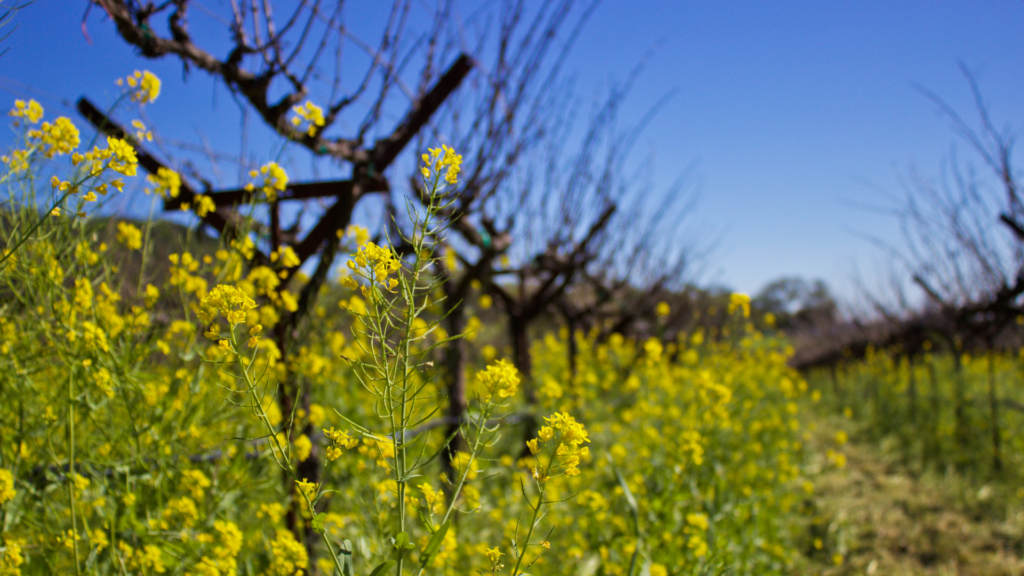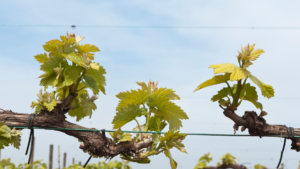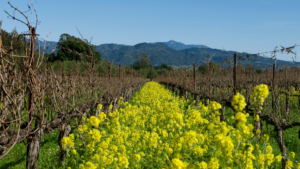The Importance of Mustard in the Vineyards Before Bud Break

Mustard is more than just a feast for the eyes; it’s also a feast for the vines, whether it grows wild or is planted by careful vineyard managers. It thrives until bud break, when it is turned down to mulch the developing grapevines and offers important nutrients and phosphorus. If you want to know more about mustard in the vineyard, read on to learn more.
What is the Role of Mustard in the Vineyard?
Mustard plants also have the following unique advantages:
- The mustard plant’s seeds can remain in the soil for up to 40 years and come to life after a late downpour of rain.
- Mustard plants also produce biofumigants (natural chemical agents) that control the population of nematodes (microscopic worms that can damage vines).
- The plant also recycles and redistributes nitrogen into the soil, allowing the vines to access it more easily.
- To further repel nematodes, some vineyards have developed their cultivars that are specifically bred to have high quantities of Glucosinolate chemicals, or are ‘extra spicy.’
- The worms don’t like the mustard’s glucosinolates. Glucosinolates give the plant a strong odor and sharp flavor.
- The use of mustard to naturally reduce pathogenic nematodes saves vineyards from the use of hazardous chemical eradicators and pesticides.
What are the Benefits of Cover Crops?
Cover crops are an important part of a sustainable viticulture system. They have a direct impact on the health of the vines and the ecosystem around them. Growing a cover crop reduces the physical burden of repeatedly running heavy machinery on vineyard soil and reduces the use of chemicals that may be harmful to the environment. Here are some of the benefits of cover crops:
- Influence the growth of grapevines.
- Improves the soil structure.
- Improve the fertility of minerals.
- Protect against erosion and run-off.
- Provides a home for beneficial insects and predators.
- Help in reducing the population of nematodes.
- Improve the soil’s biological activity and organic matter content.
- Reduce the germination of weeds and growth.
What Happens During Bud Break?
Bud break, that magnificent moment in the vineyard each spring when the vines awaken from their winter hibernation, is unmistakable. Grapevines had been lifeless and naked all winter. However, as the temperature rises and the days become longer, they suddenly burst with vigor. During the winter, they use the energy stored deep inside their trunks and roots to force out the first green leaves of a new growth cycle.
These tiny and sparse leaves have only one purpose after spending the winter tightly packed and protected: to initiate photosynthesis and generate new energy. The vine no longer becomes reliant on the meager energy stores it had stashed away throughout the winter months.

Common Vineyard Practices Around Bud Break
Do you want to make a fantastic wine? To begin, you’ll need grapes that are fully ripe and healthy. You can only accomplish this when you participate in a variety of vineyard work activities throughout the season. A range of factors, including the climate, weather conditions, season, grape variety, and vineyard size determine when to begin yearly work and activities. Common vineyard practices around bud break include:
- Pruning: To avoid spring frost damage, viticulturists have developed several ways for delaying bud break. Every year, vineyard pruning is required since only one-year-old wood produces fruit-bearing buds. Specific approaches, like double pruning, can postpone bud break and protect against spring frost damage. Canes are cut to a minimum and left long over the winter in this scenario. Following bud break, workers clip the canes to the appropriate number of buds. Delaying trimming until after the harshest winter temperatures have passed will help to delay bud break in specific areas prone to particularly cold winters.
- You’ll be applying your first or second fungicide of the season during bud break.
- Shoot thinning will occur in a couple of weeks, so keep a watch on shoot growth. You can use electric pruners or loppers.
- At this time, there are few insect pest problems, but keep an eye out for flea beetles and phylloxera.
- If you’re using herbicides to control weeds and haven’t done so yet, apply a spring post-emergent and pre-emergent tank-mix before the weeds are 6 inches tall.
A&J Vineyard Supply Can Help
Whether the mustard is blooming or the shoots are pushing, our goal at A&J Vineyard Supply is to make ordering trellis development and maintenance materials the most straightforward aspect of your farming routine.
We equip ourselves to reach that aim, with a full inventory at our main office in Napa Valley and partner mills all over the world. We have the resources and product knowledge to ensure you obtain the quality vineyard supply products you need when you need them, whether it’s steel, wood, or wire. Reach out to us today, to place your order or just ask a question. We’re here to help.

